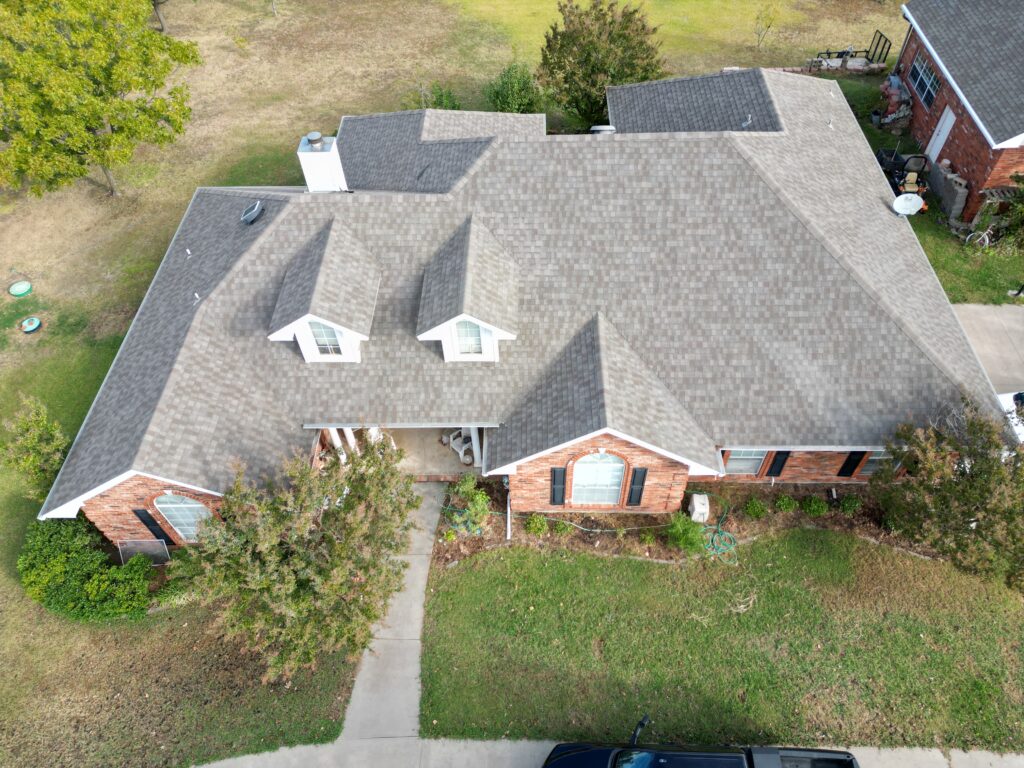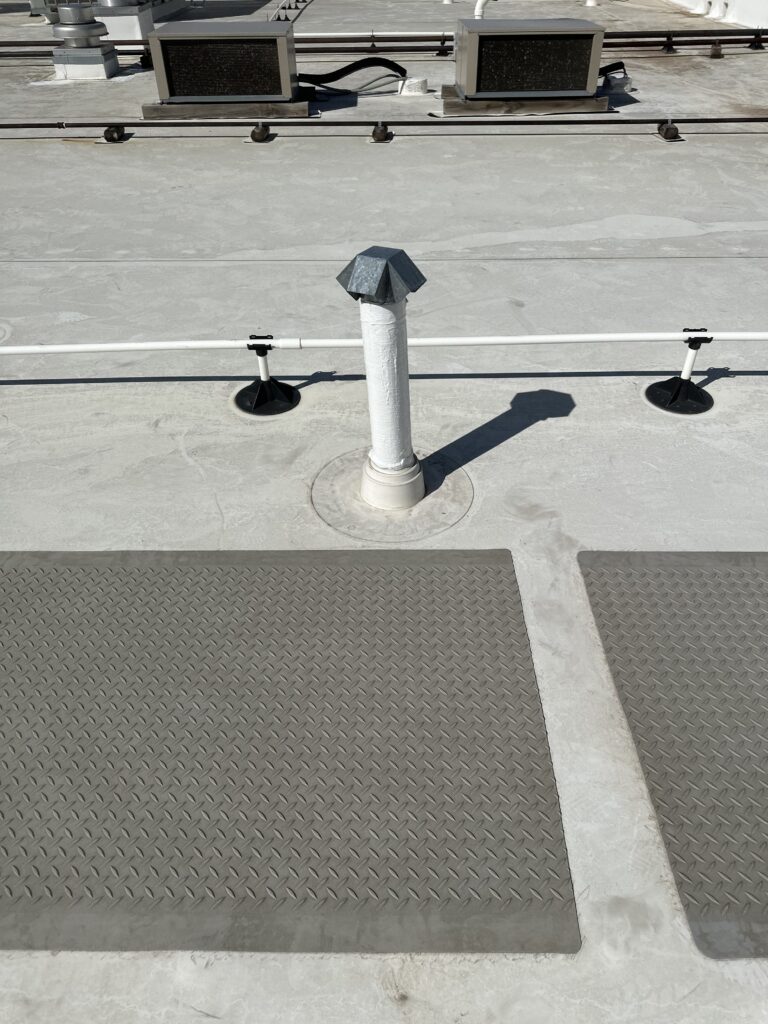Living in Austin, TX means experiencing hot summers and scorching temperatures. While you may be aware of the discomfort heat can cause, have you considered the impact it can have on your residential and commercial roofs? In this article, we will explore how heat affects roofs in Austin, TX, and discuss the importance of taking proactive measures to protect and maintain them.

Thermal Shock and Contraction
One significant effect of heat on roofs is known as thermal shock. This phenomenon occurs when there is a sudden fluctuation in temperature, especially in regions with hot climates like Austin, TX. The intense heat during the day, followed by cooler temperatures at night, creates a cycle of expansion and contraction in the roofing materials.
Extreme heat can lead to significant temperature fluctuations, causing roofing materials to expand during the day and contract at night. This continuous cycle of thermal expansion and contraction places stress on the roof’s structure, leading to potential damage over time. As a result, the roof may develop cracks, gaps, or even structural deformations. Regular inspections and timely repairs are crucial for addressing these issues before they worsen.
Deterioration of Roofing Materials
The intense heat in Austin, TX, can accelerate the deterioration of various roofing materials. For example, asphalt shingles commonly used in residential roofs can become brittle, crack, or curl under prolonged exposure to high temperatures. Metal roofs may expand and contract, causing fasteners and joints to weaken. Additionally, tiles can experience thermal stress, leading to cracks or detachment. Regular maintenance, inspections, and prompt repairs can help mitigate the effects of heat-induced deterioration.
UV Radiation and Aging
In addition to heat, the sun’s ultraviolet (UV) radiation is another factor that affects roofs. Austin’s sunny climate exposes roofs to substantial UV radiation, which accelerates the aging process of roofing materials. Over time, this can lead to fading, degradation of protective coatings, and reduced durability. Regular roof coatings or sealant applications and the use of UV-resistant materials can help protect roofs from UV radiation and extend their lifespan.
Excessive heat absorption by roofs can significantly impact the energy efficiency of residential and commercial buildings. Heat gained through the roof can increase indoor temperatures, making cooling systems work harder and consume more energy. To mitigate this, consider implementing cool roof technologies such as reflective coatings or materials. Adequate insulation and ventilation are also crucial in reducing heat transfer and maintaining a comfortable indoor environment while minimizing energy consumption.
While heat is a primary concern, it can also exacerbate moisture-related problems on roofs. High temperatures can cause trapped moisture to evaporate rapidly, leading to the expansion and contraction of roofing materials. This process can compromise the integrity of the roof and potentially result in leaks or structural damage. Proper drainage systems, regular inspections, and adequate ventilation are essential in managing moisture-related issues and maintaining a healthy roof.
Mitigating the Effects of Heat on Your Roof
While heat can be a challenging element to combat, there are steps you can take to minimize its impact on your roof:
Proper insulation in the attic and roof cavity can help reduce the transfer of heat into your living spaces, easing the strain on your cooling system.
Good ventilation allows for the release of hot air trapped in the attic, preventing excessive heat buildup and promoting airflow.
Opting for light-colored or reflective roofing materials can help reflect sunlight and reduce heat absorption.
Regular inspections and maintenance by professionals can identify any issues caused by heat or other factors promptly. Prompt repairs can prevent further damage and extend the lifespan of your roof.
Heat does indeed affect your roof, causing thermal shock, weakening of materials, and potentially reducing energy efficiency. Understanding the impact of heat on your roof allows you to take preventive measures to mitigate its effects and prolong the lifespan of your roof. By implementing proper insulation, and ventilation, and choosing suitable roofing materials, you can ensure your roof remains in optimal condition, protecting your home for years to come.

Addressing Heat-Related Damage
Extreme heat can take a toll on your roof, leading to potential damage and compromising its functionality. When signs of heat-related damage become apparent, it may be time to consider roof replacement.
Heat-related damage can manifest in various ways, including cracked or warped shingles, fading or deteriorating roofing materials, and compromised structural integrity. Other indicators may include increased energy consumption, frequent leaks, or a decrease in the roof’s overall performance. It’s essential to conduct a thorough inspection or consult with a professional roofing contractor to assess the extent of the damage.
The age and overall condition of your roof are crucial factors to consider when determining if a replacement is necessary. If your roof is approaching or exceeding its expected lifespan, heat-related damage may exacerbate existing issues and compromise its longevity. Additionally, if multiple areas or the majority of the roof exhibit significant damage, a replacement is often the most cost-effective and practical solution.
A roof replacement presents an opportunity to improve energy efficiency and reduce long-term costs. Consider choosing roofing materials with high thermal resistance, such as reflective coatings or cool roof technologies. These options can minimize heat absorption, reduce cooling demands, and potentially lower energy bills. Additionally, modern roofing materials often come with enhanced durability, reducing the need for frequent repairs or replacements.
When replacing your roof, it’s essential to select the appropriate materials for Austin’s climate and your specific needs. Some options to consider include asphalt shingles, metal roofs, tile roofs, or sustainable roofing materials like solar panels or green roofs. Consult with a roofing professional to determine the most suitable choice based on durability, energy efficiency, aesthetics, and budget.
Roof replacement is a complex and labor-intensive process that requires expertise and precision. Hiring a reputable roofing contractor is crucial to ensure the quality and longevity of the new roof. Look for experienced contractors with a solid track record, proper licensing, and insurance. Request references and obtain detailed written estimates before making a final decision.
When heat-related damage compromises the functionality and integrity of your roof, considering a roof replacement becomes essential. Addressing the damage promptly can prevent further issues and provide an opportunity to enhance energy efficiency and cost savings. Assess the age and condition of your roof, select suitable materials, and hire a professional roofing contractor to ensure a successful replacement. By investing in a new roof, you can restore the protection and aesthetics of your property while safeguarding it against future heat-related damage.
